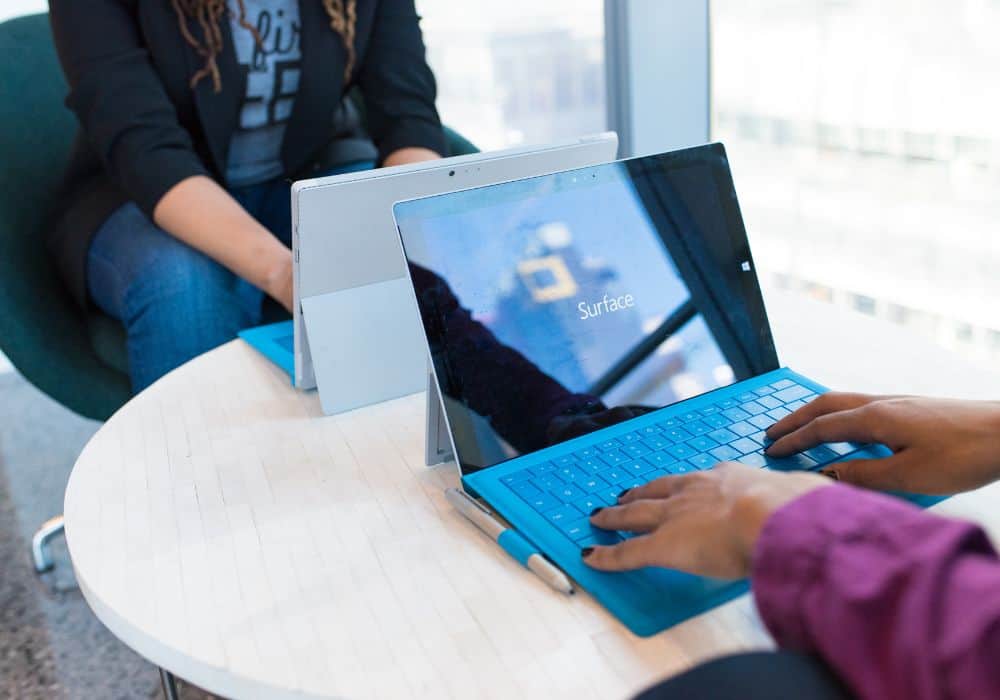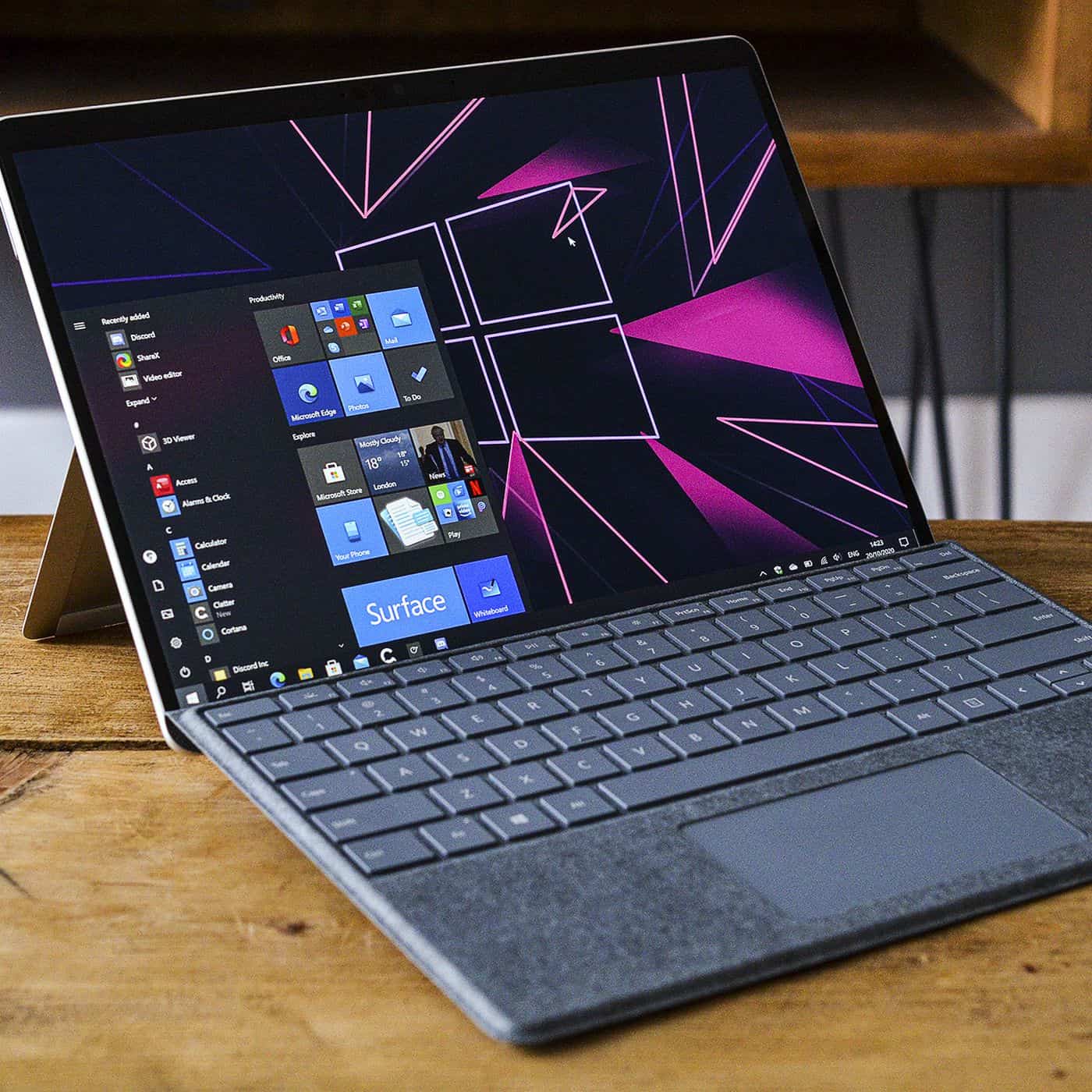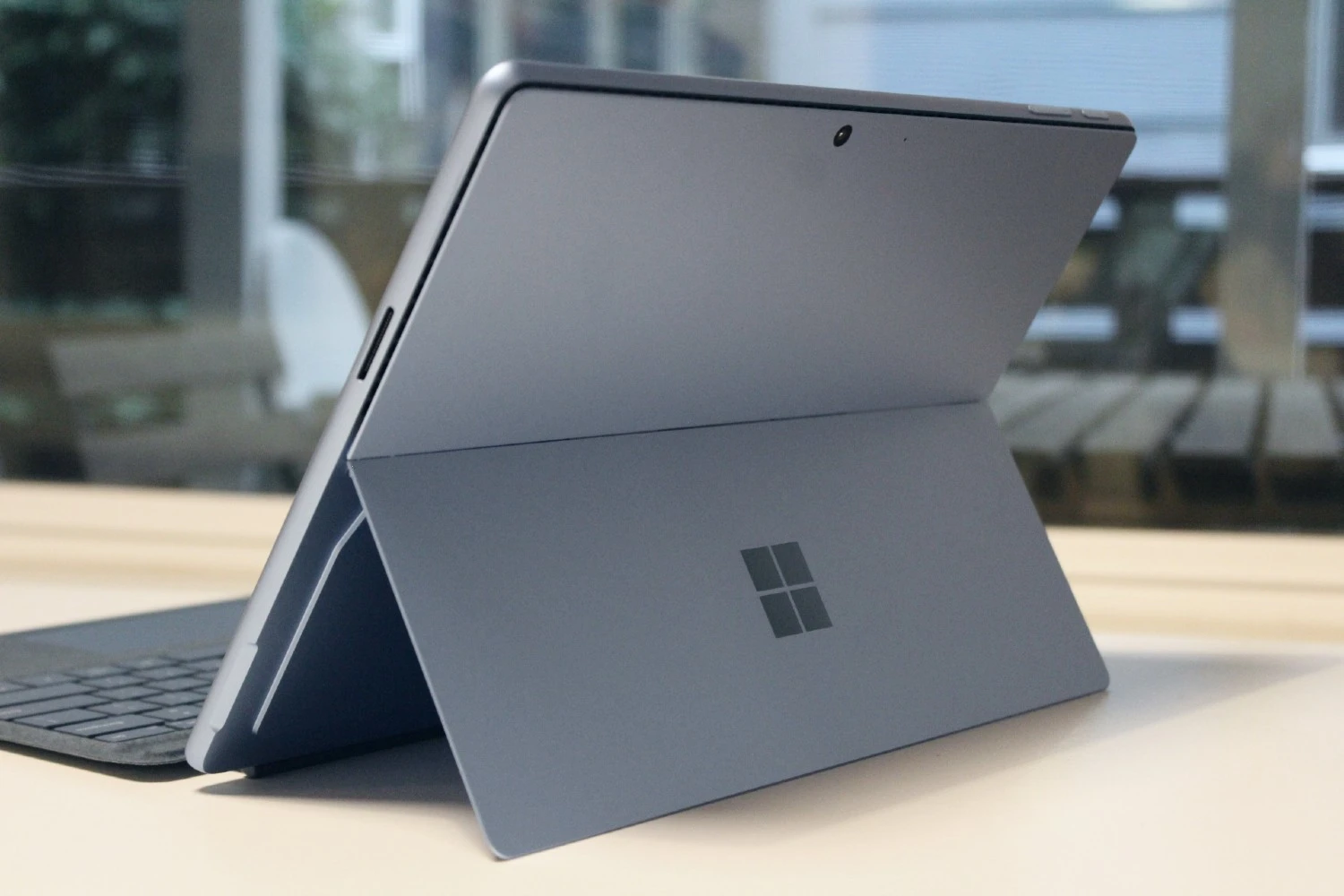Surface Pro laptops offer a decent build and strong working battery with a 15-hour capacity on a full charge. So, the laptop is an excellent option for business and consumer use. But, ever so often, you may experience issues with the Surface Pro battery not charging.
This doesn’t necessarily mean the laptop or its battery is of poor quality. But, various issues, including minor ones, may contribute to this problem. So, the next time you experience trouble with your Surface Pro battery that won’t charge, we have a solution for you.
Here’s a step-by-step foolproof guide to help you diagnose why your Surface Pro battery is not charging and how to fix the problem.
Table of Contents
Why Is My Surface Pro Battery Not Charging?
The main reason for a Surface Pro battery not charging is associated with improper power supply. Now, a wide range of issues can cause a distorted power supply. This includes improper setup of the connector, damaged connectors, or power supply.
But, this is not all that causes issues with charging your Surface Pro battery. There are several other reasons why charging issues arise.
Below, is a complete guide to why you may be experiencing issues with the Surface Pro battery not charging.
How Do I Know My Surface Pro Battery Is Not Charging?
You can easily figure out your Surface Pro battery is not charging through the following indicators or notifications on your laptop;
- Not plugged in
- Plugged in, not charging
- Battery not detected
- Plugged in, charging (but the icon battery is not running)
- The laptop turns off immediately when you unplug it
Common Causes and Solutions

Here are common causes of Surface Pro battery charging problems and simple solutions to fixing them. The guide below shares a step-by-step process for diagnosing and fixing the problem. So, you want to follow each step as prescribed to increase your chances of success.
1. Bad Power Supply
This is among the first things you want to check. You can easily diagnose a bad power supply by examining the LED light on the surface charger. If it doesn’t come on, it means the charger isn’t receiving any power. A Surface Pro battery that won’t charge may be caused by a power strip or outlet that doesn’t work.
Solution: Use a different power supply – If a bad power supply is an issue, try moving the charger around different power strips and outlets. If a previous power strip or outlet was the issue, your battery should resume charging immediately after connecting with a working outlet. You will be able to confirm this by seeing the LED light come on on the charger.
2. Loose Cable
Improperly connected cables can also prevent power from entering the laptop and battery. So, the problem may still persist even after connecting your charger to a working outlet. Just like with a bad power supply, if the charging cable is loose, the LED light on it will not turn on.
Solution: Tighten the Cable – check the cable to ensure it is plugged in right and not loose. If a loose cable were a problem, plugging it in correctly fixes the issue. You will notice the LED light on the charger comes on and charging will resume. If the power doesn’t come on after correctly plugging the cables and connectors into a working outlet, chances are your charger is broken.
3. Damaged Or Dirty Connectors
Damaged connectors or components, such as charging ports, power connectors, or charging cables, also prevent power from traveling to the battery. These connectors may have also collected dust rather than being damaged. Connectors that have collected too much dust can also affect the power supply.
Solution: Clean or replace connectors – visibly examine your connectors to ensure there isn’t dust accumulation. If you notice any dirt, dust, or grime, clean it out using a clean and dry cloth and try connecting the charger again.
If it works, then, the elements may have been the issue. If you still experience trouble, examine the connectors and cables for any visible damage. If you notice damage, you may have to replace the damaged connector with a new one (approved Microsoft-licensed options are fine).
You can also use the light indicators on the laptop to guide you when fixing connector-related issues. Here’s how:
- When the light is off (indicates the charger doesn’t have power) – Securely connect the charging cable to the laptop and plug it into a different wall outlet. If the light remains off, you may have to replace your Surface Pro power supply.
- Blinking or flashing white (indicates poor connection or damaged charger): Check for loose connection or damage to your charging cable. Even if you don’t notice any visible damage, your Surface Pro power supply may still require replacement.
- Solid white (indicates battery or software problem): If the light indicators are on to a solid white and still have a charging problem, visit the Surface Pro page on the Windows site. Once there, check the battery icon status for further directions on how to diagnose and fix the problem. If this option fails, you can reach out to Windows customer support for more guidance.

4. Improper Battery Settings
Improper battery settings on your surface Pro can also impact the charging process. In some cases, you may notice the laptop not charging at all or not reaching 100% fully charged status.
Solution: Go to the Settings options and review the Battery Settings. in most cases, you will notice your Surface Pro set to charge your battery to less than 100%. This setting usually helps to extend your battery life. But, if you feel it’s limiting your activities, you can always reset it to 100%.
5. Outdated Software
Outdated software on your Surface Pro can also be the reason why your battery won’t charge.
Solution: Install updates – Before you rush off to contact Windows customer support or replace parts, try installing updates. Here’s how you install updates;
- Go to your laptop’s settings option and open Windows Update and select Check for Windows Updates. Typically your Surface Pro will automatically install updates if it needs to and restart immediately after the updating process.
- After restarting, check for Windows Updates until you see the message, Your Device is up to date. This confirms that the most recent updates are installed. The next step is to check if your battery is now charging.
- If you notice that the software was already updated, simply reset the power supply. To do so, turn off the Surface Pro and disconnect it from the power outlet. Let it rest for about 5 minutes, connect its cable to the power outlet and restart it. If all is well, the battery should be charging.
6. Battery Driver Reset
If a software update doesn’t work, your Surface Pro may be experiencing issues with the battery’s driver.
Solution: Reinstall battery drive – The safe approach would be to reinstall your battery driver. Here’s how to do it;
- Set up a System Restore to protect your device before the reinstallation process.
- Go to Device Manager and select the arrow icon next to the Batteries option
- You will be redirected to different options including Microsoft ACPI-Compliant Control Method Battery– right click this option and choose Uninstall Device
- Once done with uninstalling the driver, restart your Surface Pro.
- When the device comes back on, the system will instantly detect the loss of the driver.
- Follow the same steps, starting with Device Manager to reinstall the driver.
- Once done, restart your Surface Pro again and try recharging the battery again.
What If My Surface Pro Battery Still won’t Charge?

If your Surface Pro battery still won’t charge, your next step is to reach out to Windows customer support. You can visit the Microsoft support site and submit your request. Simply go to Device Service and Repair, then, register, and select your Surface to begin the service order.
You may also experience battery charging problems if you use third-party components on your Surface Pro, whether a power cable or the battery, to name a few. According to the Microsoft site, third-party accessories may be incompatible or counterfeit.
This, in turn, poses the risks of damaging your device, fire hazards, and even losing your warranty. So, if you have any non-authorized parts and experience these problems try to replace them with original Microsoft or Microsoft-licensed devices.
Conclusion
Investing in a Surface Pro laptop comes with the risk of experiencing the Surface Pro battery not charging someday. The good news is that this is not an uncommon problem, even amongst the best laptops in the market, like the Surface Pro.
Nonetheless, with a detailed guide on diagnosing and fixing the charging problem, experienced by Surface Pro batteries, you can rest assured that this problem will never be grand. After all, you will be just a guide away from easily detecting and fixing the problem.
